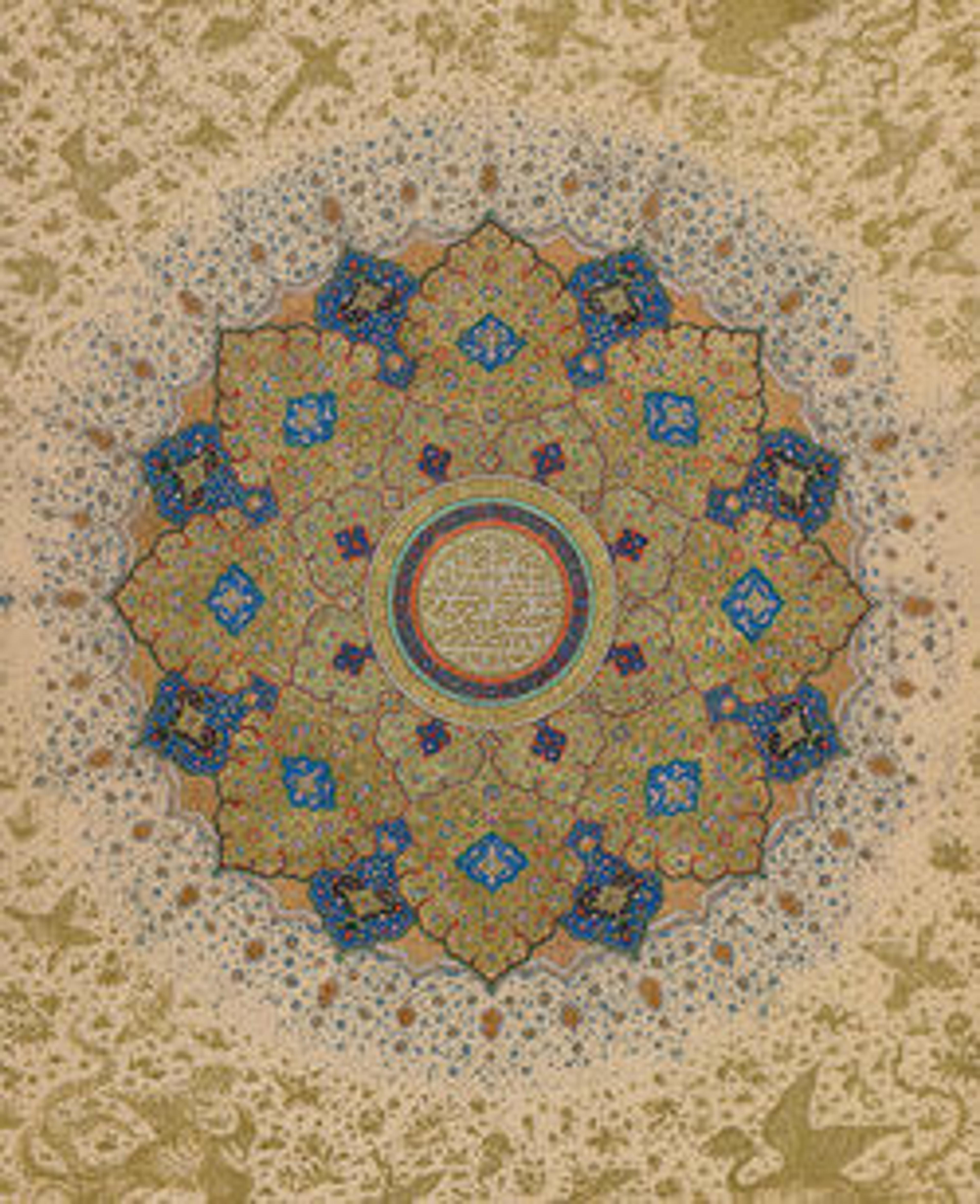Sash (
Men’s sashes, called patkas, were wrapped two or three times around the wearer’s waist and tied with their ends hanging down in the front. Worn over jamas, the long robes typical of the time, they allowed Mughal men to display their wealth by tucking daggers, pencases, and other precious objects into the fabric. A row of floral sprays is embroidered onto each end of this patka. After being exported to Europe through the British military’s presence in colonial India, a modified version of the patka was worn in tuxedo sets, taking its name from the Hindustani and Persian term kamarband, which means ‘waist bound up’.
Artwork Details
- Title: Sash (
) with a Floral Border - Date: second half 17th century
- Geography: Attributed to India
- Medium: Cotton, silk; plain weave, embroidered
- Dimensions: Textile: L. 125 in. (317.5 cm)
W. 27 in. (68.6 cm) - Classification: Textiles-Costumes
- Credit Line: The Alice and Nasli Heeramaneck Collection, Gift of Alice Heeramaneck, 1983
- Object Number: 1983.494.9
- Curatorial Department: Islamic Art
More Artwork
Research Resources
The Met provides unparalleled resources for research and welcomes an international community of students and scholars. The Met's Open Access API is where creators and researchers can connect to the The Met collection. Open Access data and public domain images are available for unrestricted commercial and noncommercial use without permission or fee.
To request images under copyright and other restrictions, please use this Image Request form.
Feedback
We continue to research and examine historical and cultural context for objects in The Met collection. If you have comments or questions about this object record, please contact us using the form below. The Museum looks forward to receiving your comments.
